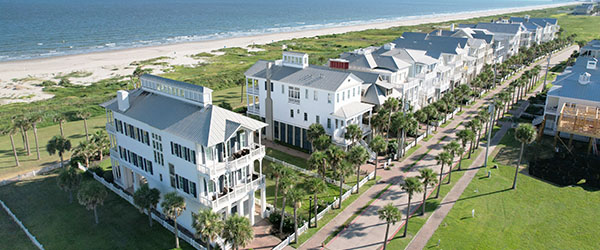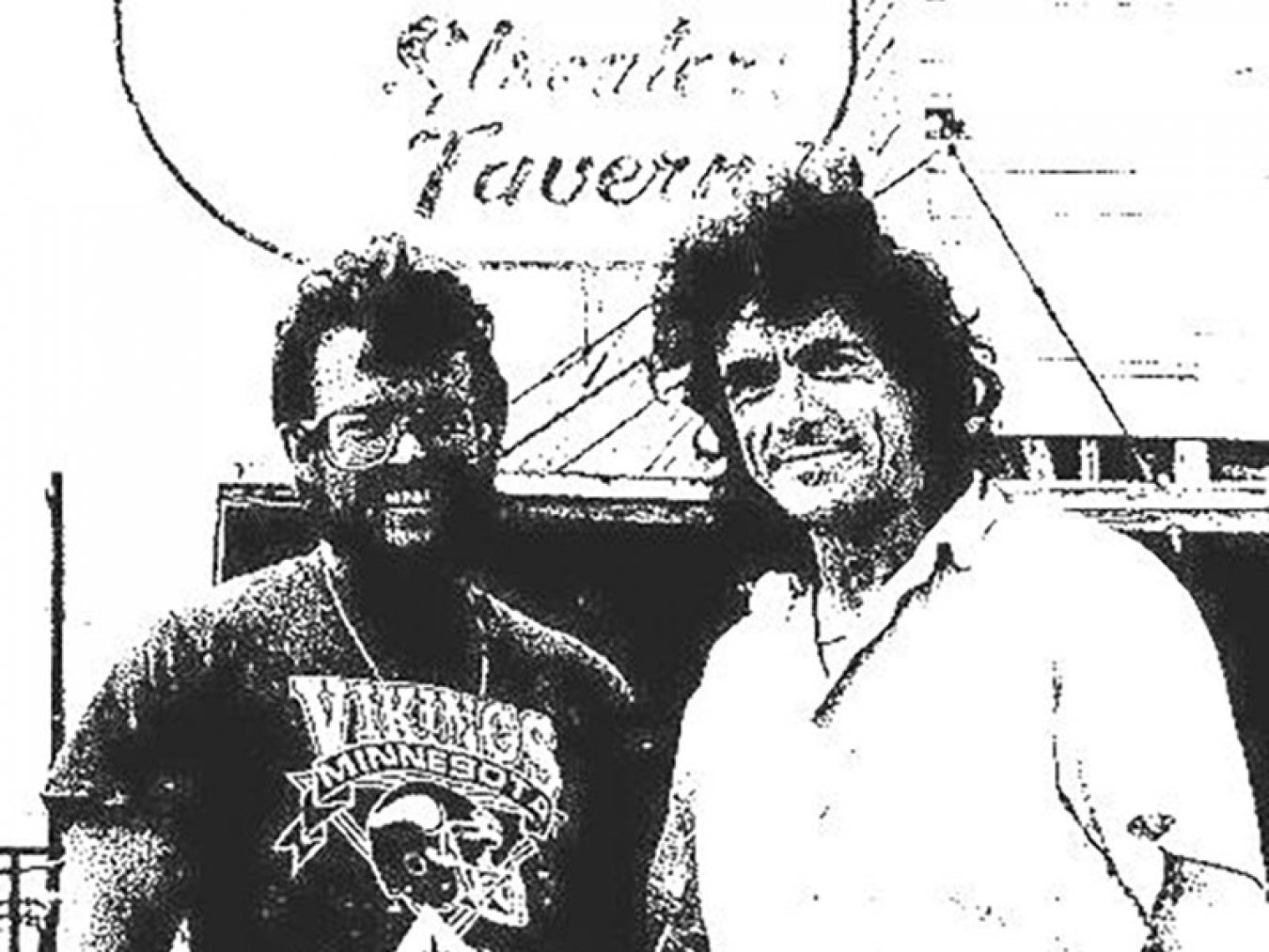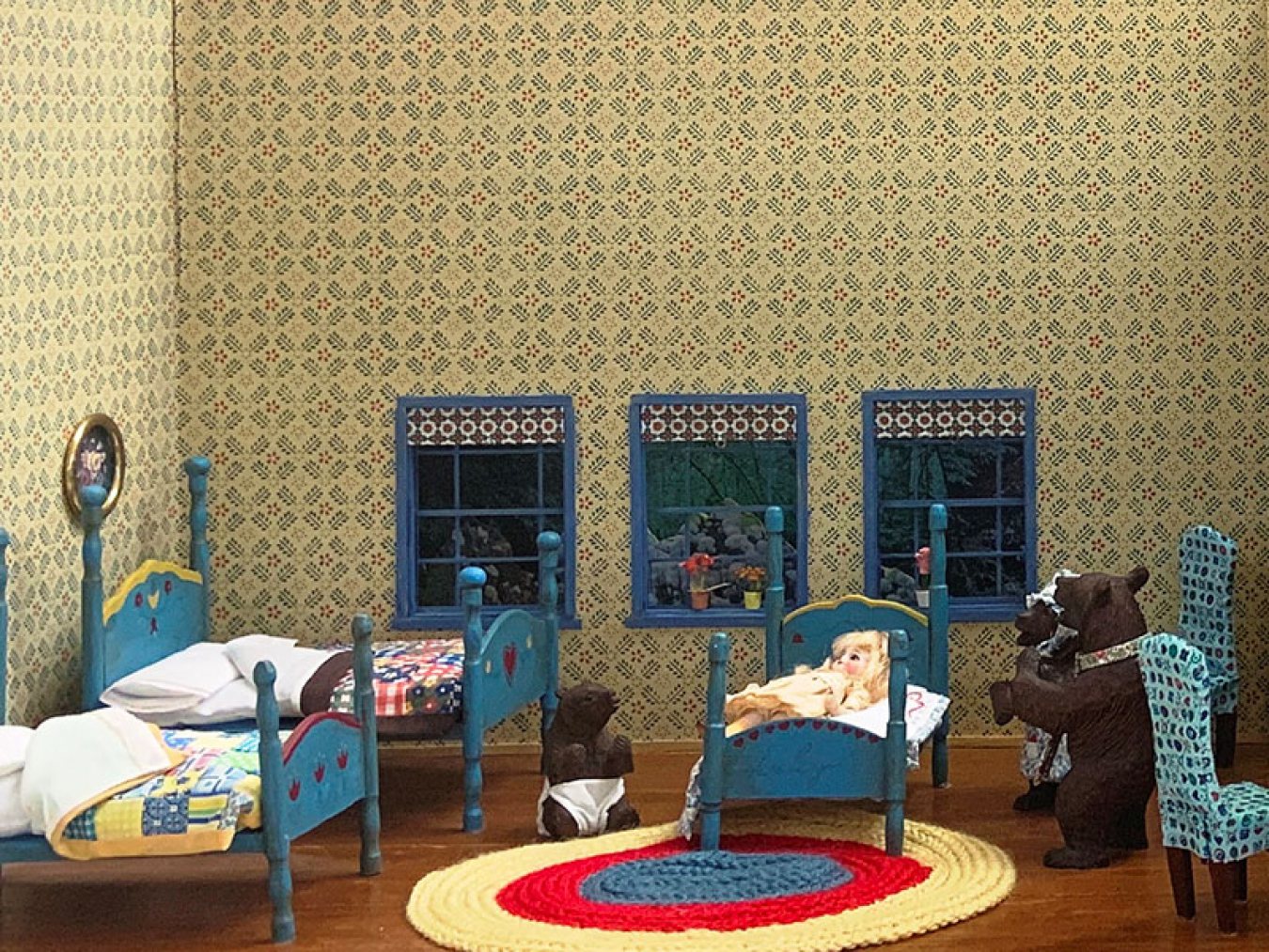Central High School
Rosenberg Treasure of the Month
During the month of February, the Rosenberg Library will display photographs, yearbooks and a T-Shirt from Galveston’s historic Central High School, the first high school for African-Americans in Texas.
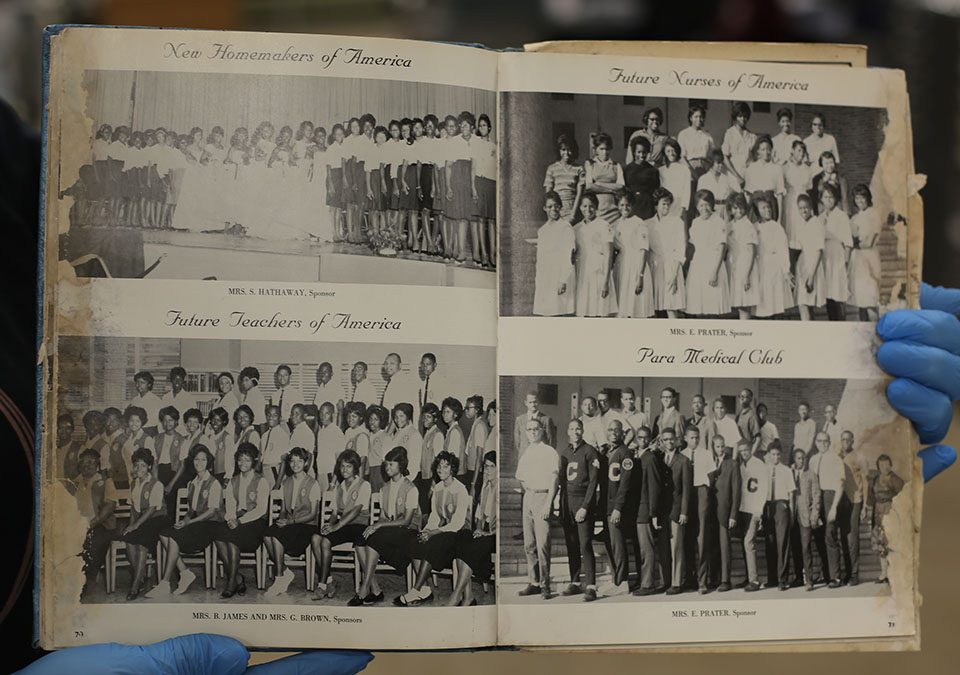
| 1964 Central High School Yearbook | Courtesy of the Rosenberg Library and Museum |
Central High School was the first high school for African American students in Texas. Originally named the Central Colored School, it was founded in Galveston in 1885 and gave African Americans the ability to pursue an education beyond fifth grade. Its name changed to Central High School in 1886. It was consolidated with the previously all-white Ball High School in 1968.
Central High School was well known and respected throughout the state of Texas and beyond, attracting students throughout the state and neighboring states. Some students arrived without their family, desperate for a good education. The teachers were equipped with a strong educational background and strove to teach their students more than bookwork. They took inspiration from the world around them and pulled pertinent information from the changing times. From 1886-1967, more than 40,000 African American students attended Central High, producing more than 7,000 graduates.
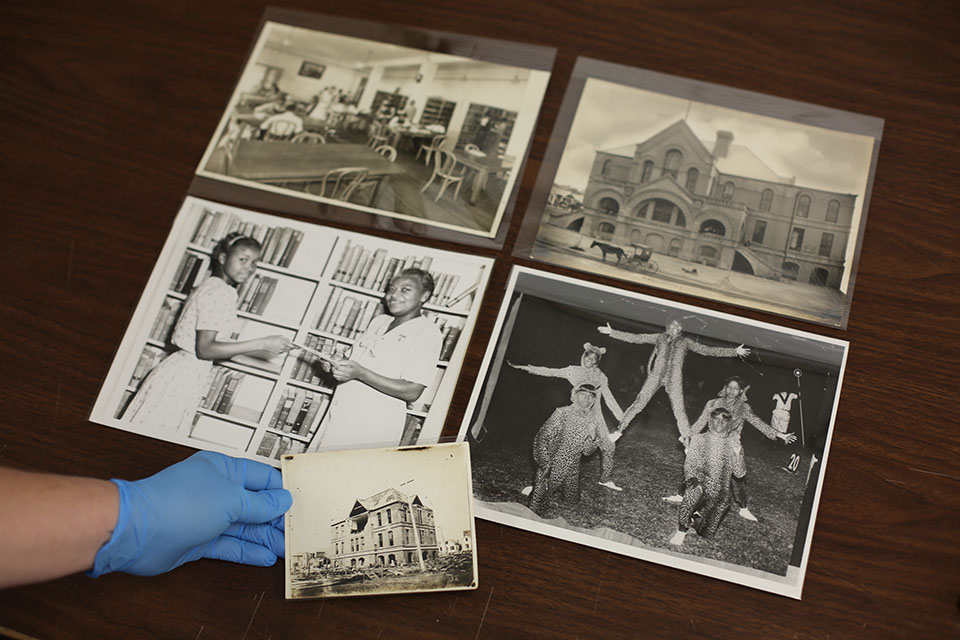
| Students and Buildings of Central High School | Courtesy of the Rosenberg Library and Museum |
The Buildings
The school made its start in a rented building at 16th street and Avenue L in the year 1885. In 1888, Central High School changed to a building at 15th and Avenue N. In 1893, a plot of land was purchased between 26th and 27th streets on Avenue M. Here a new school building was built, designed by famed architect Nicholas Clayton. An additional wing was added in 1924 to accommodate the growing student body.
Central High School moved to its final building in 1954. It was a massive building encompassing 31st – 33rd streets between Avenue H and I. Along with more available rooms, the school now included a gymnasium, a pool, laboratories, and other amenities, putting it on par with white schools at the time.
The Principals
The first principal of Central High School was Champion J. Waring. He worked with three teachers to guide the 125 students attending at that time.
A few years later in 1888, John R. Gibson became the next principal. He sought accreditation for the school and it was granted by the state of Texas. This accreditation was significant as it allowed graduating students to enter college without taking a competency test. Later, the school was also accepted into the Southern Association of Secondary Schools and Colleges. Through these measures, Gibson raised awareness and prestige for Central High School.
In 1936, Gibson’s retired and was followed by Walter J. Mason who remained principal until his death in 1941.
From 1941-1967, Dr. Leon A. Morgan worked as the principal and later transitioned into the administrative offices, becoming the director of research and curriculum. He expanded extracurricular activities and provided adult education services for the entire community. He was also pivotal in facilitating the desegregation process. As part of this transition, James L. Sweatt, Jr. was made interim principal from 1967-1968. He oversaw the consolidation of Central High School with Ball High School. Prior to this, he had been principal at Goliad Elementary.
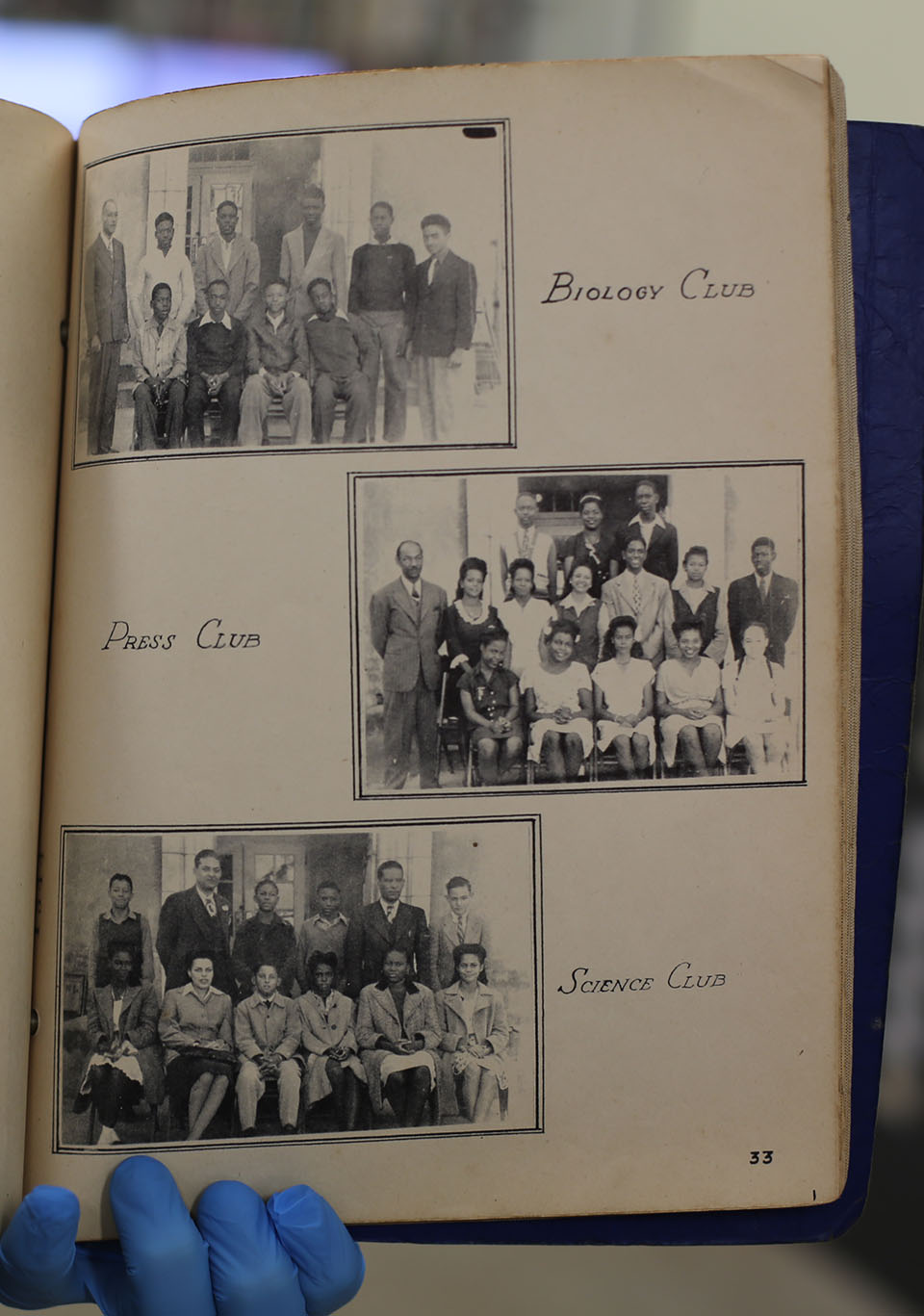
| Academic Clubs of Central High School, 1945-46 Yearbook | Courtesy of the Rosenberg Library and Museum |
Courses of Study
At the beginning, Central High School’s curriculum consisted of basics known as the three R’s – reading, writing, and arithmetic. These basics guaranteed that all students had the foundational knowledge they needed to tackle complex subjects. By the 1940s, more courses were added to provide a well-rounded education, including spelling, rhetoric, physical training, arts, literature, and athletics.
With the new, bigger building in 1954, the school was able to offer even more quality classes including speech, advanced math (geometry, trigonometry, calculus), shop classes (woodworking, metalworking, drafting, automobile mechanics), business education (typing and bookkeeping) and trades, such as sewing.
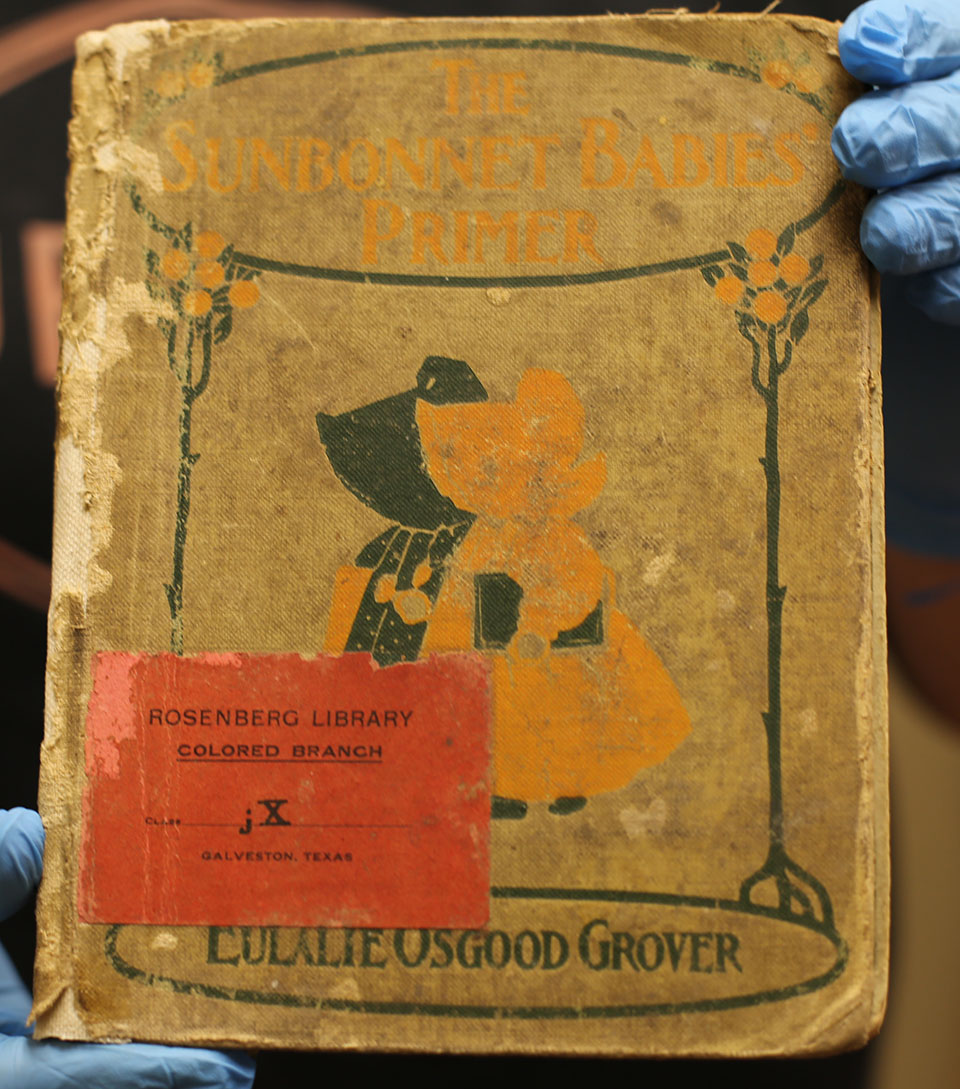
| Vintage Children’s Book, 1923 Edition | Courtesy of the Rosenberg Library and Museum |
Extra-Curricular Activities
There were many areas that the Central High School Bearcats excelled at. Students received statewide recognition for their accomplishments in the school’s growing extra-curricular activities, including football, baseball, basketball, various singing clubs, a Clef Club (traveling talent production), band, the drum and bugle corps, and drama club. David O’Neal, the treasurer of the Old Central Cultural Center states, “There were so many successful Central High students. For instance, Charles Ferguson was a football player for the Buffalo Bills in 1961-62.” They also made waves in academic clubs such as the Math Club and the National Honor Society.
Another First
In 1904, the public school board and the Rosenberg Library Association met to discuss the establishment of a library branch at Central High School. This branch would give African Americans access to the library. The cost for the addition to the school, supplies, furnishings, and salaries were all paid for by the Rosenberg Library Association. On January 11, 1905, the Rosenberg Library established the Colored Branch of the Rosenberg Library at the school, making it the first library for African Americans in Texas and the first of its kind in the United States.
In 1925, the cost for the library was shared by the Rosenberg Association Board of Directors and by the Board of Trustees for the public schools. In 1953, costs were also shared with the school.
The Colored Branch of Rosenberg Library started with 1,100 books. By 1955, there were 10,380. In 1958, the main library at 23rd and Sealy opened to all races, so the branch at Central High was closed.
After Central High School
Central High School closed in 1968, but the building later became Central Junior High School and now Central Middle School. The memory of Central High is still alive in many people’s mind, especially graduates: Men like Dr. Clyde Owen Jackson – an author, composer, and community activist, Dr. Dudley W. Woodard – the second African American to earn a PhD in mathematics, and Dr. James Courtney – the first African American to receive a Doctorate of Veterinary Medicine from Texas A & M; women like Jessie McGuire Dent who participated in the Women’s Suffrage Movement, became a teacher and successfully sued Galveston Schools for equal pay regardless of race, and Izola Fedford Collins – a teacher, musician and author of Island of Color: Where Juneteenth Started. Each were successful and proud of their ground-breaking school and the educators that cared so much for them.
In 1973, the Old Central Cultural Center was established in the building at 2627 Ave M – what was once Central High’s second location. According to the Cultural Center, the location was chosen “to ensure that this site which represents the first public high school and library for blacks in the State of Texas is properly maintained and financially stable in order to serve as a community center and to provide programs within the Galveston community.”
Principal Dr. Morgan once said, “The city of Galveston and the black community look upon the third campus and its retained building as symbolic of the years when education for blacks was becoming recognized as a very important asset to the city. The site and building are rich in unique history and tradition.”
The Treasure of the Month is located on the library’s historic second floor near the East Entrance. It can be viewed during regular library hours, 9:00 a.m. to 5:45 p.m. Monday through Saturday and from 9:00 a.m. – 8:45 p.m. on Tuesdays and Thursdays. For more information, please contact Ivy Albright, Museum Curator at 409.763.8854 Ext. 125 or at museum@rosenberg-library.org.
Experience a Fishing Adventure!
Luxury Vacation Rentals Available
Lee Roane
Lee Roane has worked on the Galveston.com website since 1994. He is interested in history and birding but will write about anything if he thinks it will help someone enjoy the island.


